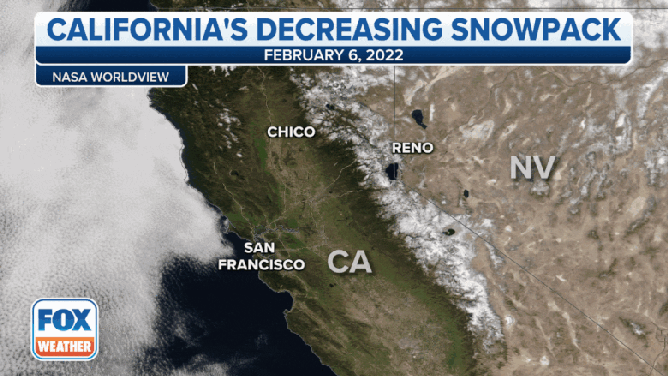Winter whiplash: Sierra Nevada goes from record snow to record dry
Tuesday marked 32 consecutive days without measurable snowfall or precipitation at the lab -- their longest such dry stretch during meteorological winter.

(FOX Weather)
SODA SPRINGS, Calif. -- What was a bounty of snowfall that reached record amounts across the Sierra Nevada mountains in December has suddenly turned into a tale of record drought just weeks later.
Snow cover was paltry at the end of November, but several feet of snow fell amid a train of atmospheric rivers slamming into central California in December.
When all was said and done, 214 inches of snow fell at the Central Sierra Snow Lab run by the University of California at Berkeley. It was the lab's snowiest December, with data stretching back to 1971.
Then came January, and while there was some snow the first week of 2022, there wasn't any for the second week. Or third. Or fourth.
Tuesday marked 32 consecutive days without measurable snowfall or precipitation at the lab -- their longest such dry stretch during "meteorological winter," which stretches from Dec. 1 to Feb. 28.
"This, unfortunately, is another record that we're going to smash," officials at the lab wrote on Twitter. "Our next shot at snow isn't for another week, and it's not guaranteed."
What's worse, temperatures around the lab are above average for this time of year, "and snowmelt is accelerating."
While there is still time this winter to turn things around - March still usually brings snow -- the current situation is leaving concerns for water supplies in the summer.
"We're starting to feel a lot like Bill Murray in Groundhog Day!" lab officials Tweeted. "Every day we come to work, look at the models, and there's still a giant hole centered on California in the precipitation forecast. Not looking great for our water in the near future."